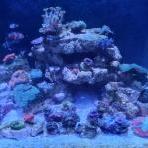-
Topics
-
Latest Update
-
0
Selling Blue Tang.
Fat blue tang. For me since 1 inch. 6 years since it has grown to 5-6 inches. Tang too big for my fish tank. Looking for a better home. selling cheap at $38 only for that can collect today from 1 - 3pm PM me to deal. -
3
WTS Sailfin Tang
Hi guys, apologies. Decided to keep the sailfin as it swins so gracefully -
2
WTS corals (GMK, Sentosa, Beach Bum Monti etc)
Hi can reserve setosa ty -
2
-
2
WTS corals (GMK, Sentosa, Beach Bum Monti etc)
Hi guys, clearing below corals at good prices. Interested pls WA me at 96nineone03oneeight. Collection at Geylang S398412. Thx!
-






Recommended Posts
Join the conversation
You can post now and register later. If you have an account, sign in now to post with your account.